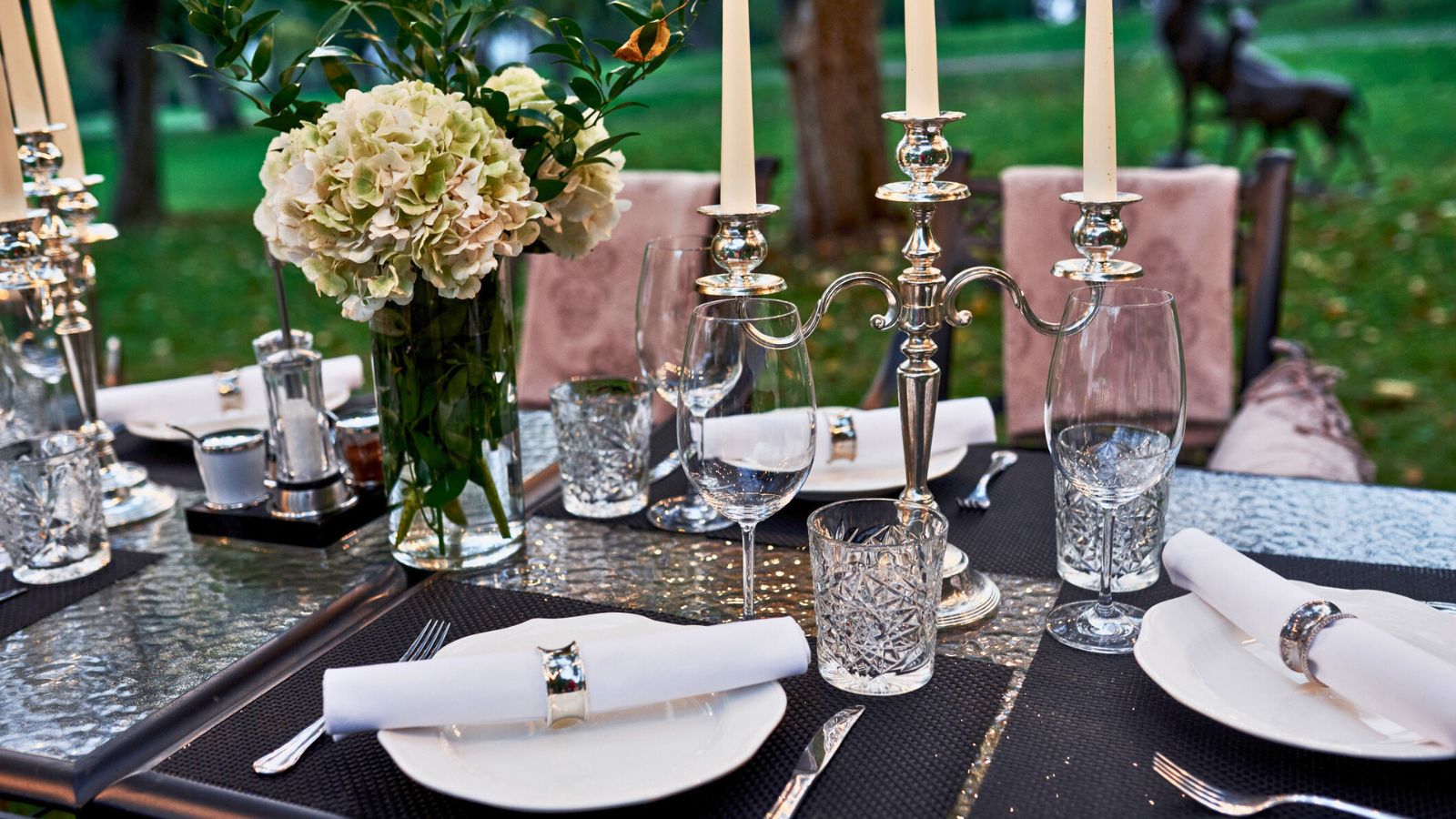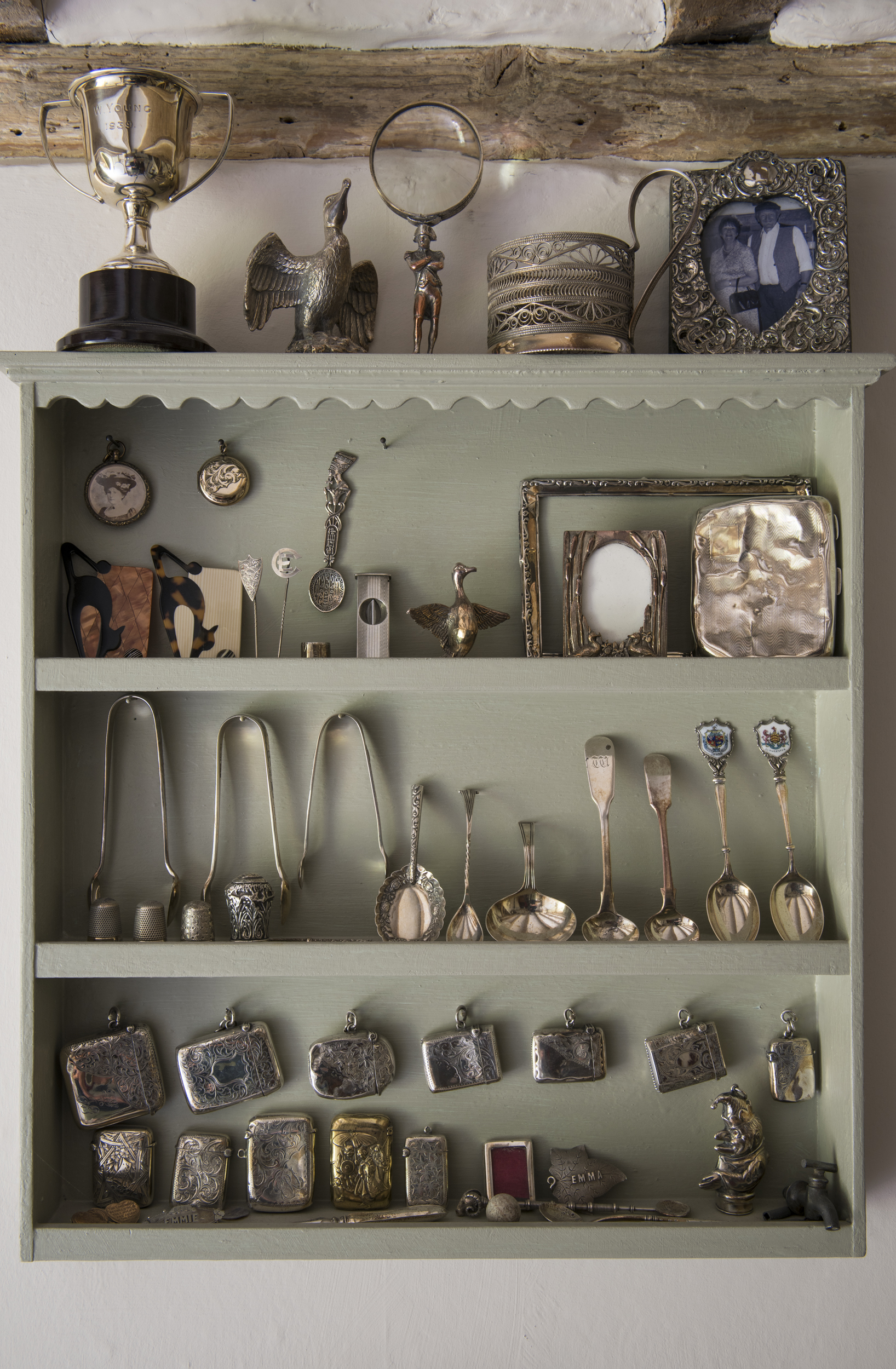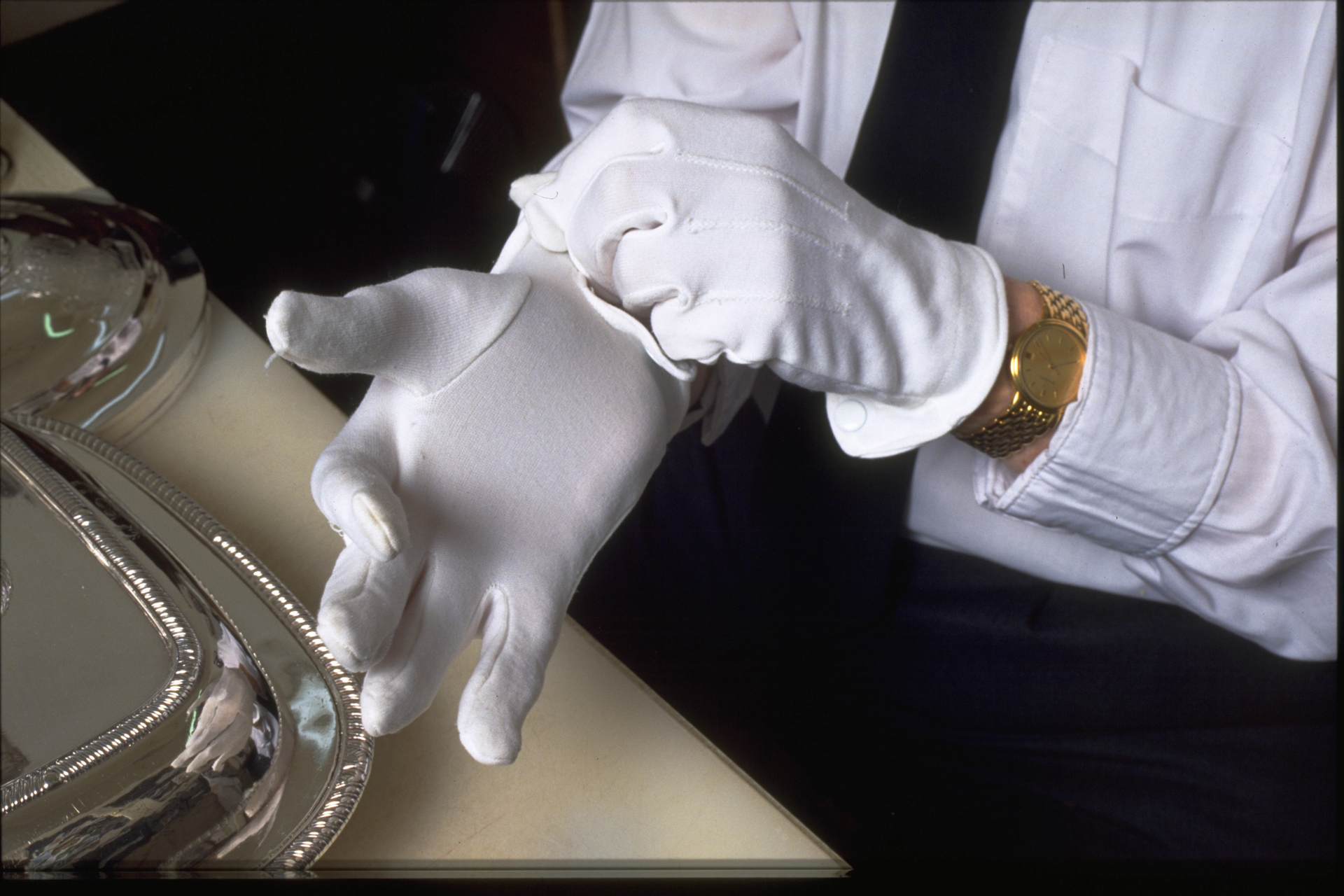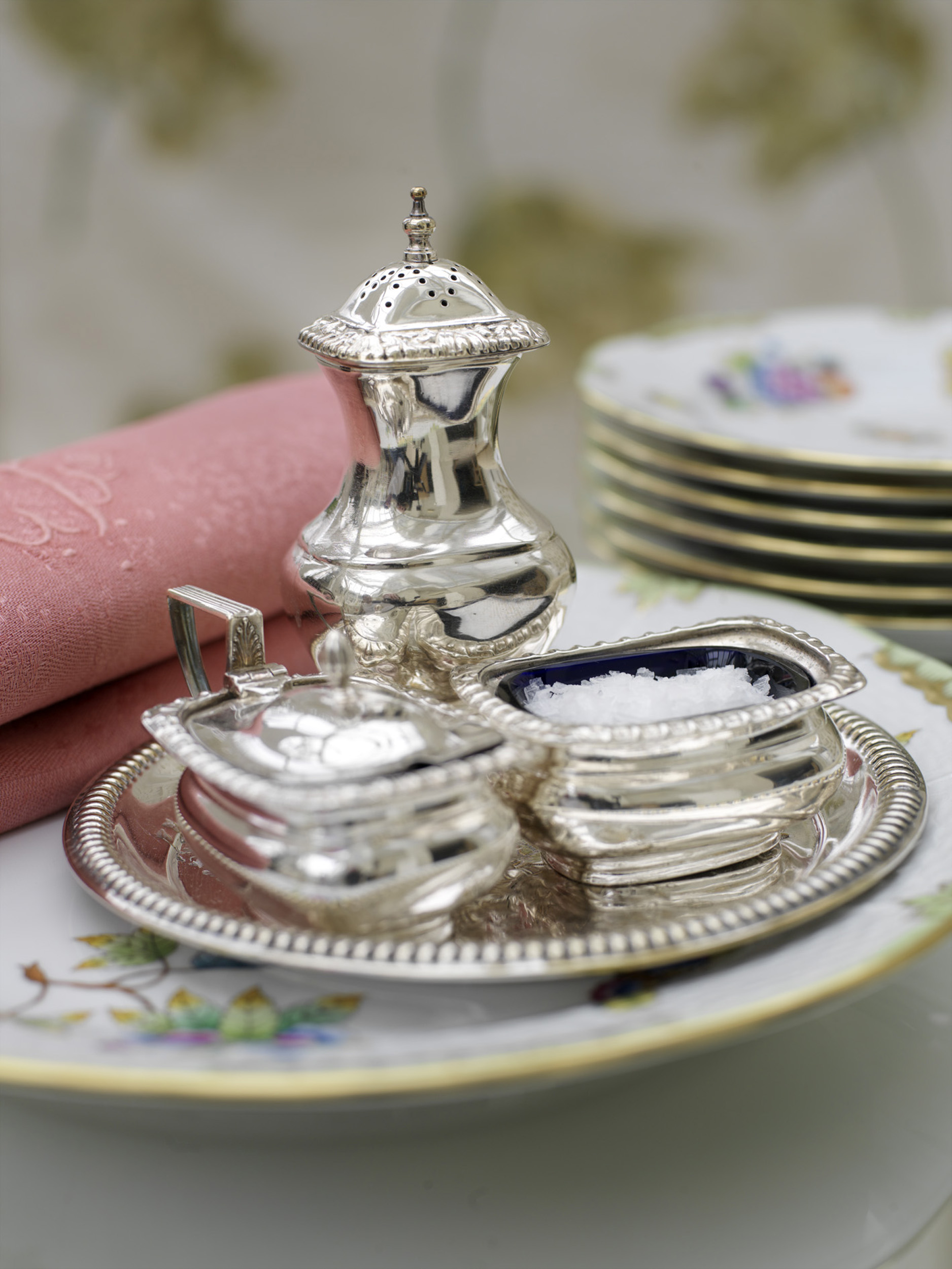How to clean silver without damaging it, whether it's sterling, solid or plated
Restore your tarnished silverware to a beautiful shine


If you have a beautiful collection of flatware, knowing how to clean silver without damaging it will help you keep it in tip, top shape for years to come.
This applies to candelabras, napkin rings and silver jewelry too. Here's how to distinguish between solid, sterling and silver-plated items, and clean naturally or with special solutions.
These cleaning tips will help you avoid damage and ensure they last a long time while staying looking new.
How to clean silver like a pro

The first thing to remember when considering how to clean silver is 'easy does it'. Polishing is abrasive, so no matter how delicate you are, it's best to keep cleaning to a minimum and only complete this when necessary.
'The damage caused by over-zealous cleaning of silverware and ‘old-fashioned’ highly abrasive compounds, can really take their toll,' says antiques expert Lisa Lloyd, owner of Hand of Glory Antiques.
There are many proprietary silver cleaners available on the market and these can range from highly reactive liquid chemical silver dip cleaners, to soft polishing cloths and tarnish wipes, all available from Amazon for quick delivery.
However, with so many products available to buy, and natural ways to clean silver in the mix too, it can get confusing. Our expert guide breaks down everything you need to know about cleaning your silver items.
Design expertise in your inbox – from inspiring decorating ideas and beautiful celebrity homes to practical gardening advice and shopping round-ups.
Which silver cleaner to use
'It is important to only use the level of silver cleaner required,' explains Vivienne Bryan of Bryan Douglas Antique Silver, 'starting at the most gentle and going on from there as needed.'
Here are categories of silver cleaning products from the most gentle, to more abrasive:
- Silver cleaning gloves or mitts, available on Amazon
- Silver cleaning foam, available at Walmart
- Silver liquid cleaner, available at Walmart
- Silver wadding, available on Amazon
If you'd rather avoid harsh chemicals or commercial silver cleaners, there are a number natural ways to clean silver too using items you will easily find in the pantry.
Sterling silver, solid silver or silver plate?

Before you start cleaning silver, 'it is important to know whether your silver is sterling silver, plated or solid silver,' explains Vivienne.
The answer will impact on how to clean silver.
- Sterling silver: This is 92.5 per cent silver with 7.5 per cent other metals and will usually have a sterling mark.
- Silver plate: This is where a thin layer of silver is bonded, through a process known as electroplating, to another base metal, such as copper or brass. Silver plate can be prone to silver flaking off or turning green.
- Solid silver: This will usually have a hallmark indicating the purity of the silver.
'Silver plate, especially more modern pieces, will need much more careful and gentle cleaning, whereas sterling silver or other types of solid silver can have more robust cleaning materials,' explains Vivienne. 'If you are in any doubt, then just contact a silver dealer.'
How to polish silver

Use silver cleaning gloves or mitts to wipe over your silverware regularly then it will only need further cleaning to remove individual marks that might occur.
'This also keeps the silver patina glowing,' advises Vivienne.
This feature was created by H&G's sister brand, Period Living magazine
Subscribe to Period Living for more inspiration Period Living is the UK's best-selling period homes magazine. A subscription provides you with all you need to know about caring for and improving a traditional house and garden.
How do you polish tarnished silver?

For sterling or solid silverware that is only slightly tarnished, clean it using silver foam cleaners or liquid silver polish.
'Silver foam cleaners are nice and gentle, and good for more decorative silver since they do not leave a residue that can build up,' advises Vivienne
If using a silver liquid cleaner for cleaning silver, give the bottle a good shake before using, then 'apply the cleaner with a sponge or cloth, wash off any residue – only on pieces that don't contain any other materials – dry and brush out the detail. Finish with a duster,' advises Henry Willis, a dealer of antique silver.
'The liquid cleaners we prefer do not have a strong color, like the red found on a lot of silver liquid cleaners in the US which can stay and become embedded in decorative silver fine detail work,' adds Vivienne, who recommends Town Talk, Goddards and Silvo – all easily available in the US and UK.
Always remember to replace the lids of tins and bottles of silver cleaner as they will dry out otherwise.
If the silverware is heavily tarnished and black, it is necessary to use a polish that is slightly abrasive to cut through the surface.
'For plain pieces with flat surfaces, a liquid silver polish is better – and surprisingly less abrasive than wadding. The surface polish can be removed with a yellow duster, and the details can be brushed out with a silver brush,' advises Henry Willis.
'I recommend using silver wadding for ornate pieces, using a soft bristle toothbrush and bamboo kebab stick – usually with a bit of wadding on the end – to get into the detail,' Henry continues.
Remember, though, that anything highly abrasive will cause myriad tiny scratches that will ruin the surface of the silverware.
'Silver wadding cleaner can be heavier, but you do not need to rub hard, a very light touch on some of the blackest of silver can give you that joy of seeing the lovely silver color returning as you gently wipe it over,' says Vivienne. Then buff it to a shine with a soft cloth.
How to clean silver plated

Silver plate needs careful and gentle cleaning. Careful use of silver wadding, silver foam cleaner or silver liquid cleaner is fine unless the piece has been replated.
'If in doubt, it is best to stick with liquid silver polish and a soft duster, as before,' explains Henry Willis.
Old Sheffield plate should only be cleaned with liquid polish, as abrasives will eventually damage the surface.
When cleaning silver-plated jewellery or items, if the metal underneath is showing through, or if the thin layer of silver is beginning to flake, it's best to have it re-plated professionally.
Avoid anything abrasive, as even an intact surface can be damaged easily. Cleaning silver-plated items with dish soap, such as the usual Dawn dish soap you get in Walmart and a soft cloth is your best bet.
For tarnished silver plating, soak in vinegar for 15 minutes, but check on it every five.
Alternatively, you can use Ketchup. Just as Ketchup can remove rust, the acetic content can help you buff away the tarnished spots on your silver plating.
What is the best home remedy to clean silver?
While we are big fans of natural cleaning methods, it is important to add a note of caution as the use of some classic silver cleaning remedies is not necessarily the best for cleaning vintage or antique silver.
'Although old-fashioned remedies for how to clean silver can work, not many old remedies are gentle on antique silver. For example, if you clean silver with baking soda, this can be bad for the patina of silver,' says Vivienne Bryan.
The methods below can be used for newer silverware, but should be used cautiously on vintage or antique silverware.
Natural ways to clean silver
How to clean silver with baking soda

Cleaning with baking soda plus cleaning with vinegar is a clever and eco-friendly method for silver and it can have surprisingly effective results on heavy tarnish and Clean My Space's Melissa Maker swears by it.
All you need is baking soda, white vinegar, salt, boiling water, aluminum foil, and a plastic bowl.
- Line the plastic bowl with aluminum foil, shiny side up.
- Add enough boiling water to cover the silverware.
- Add two tablespoons of baking soda and 1 tablespoon of salt per liter of water/ 1 cup per gallon.
- Add 1/2 cup of white vinegar and prepare for it to fizzing.
- Mix everything until it has dissolved in the water.
- Place the silver items in the bowl.
- Leave for a few minutes while the tarnish lifts.
- Flip them over if necessary.
- Lift the silverware out using tongs.
- When the silverware is cool enough to handle, rub off the remaining tarnish using a soft polishing cloth, available at Walmart.
This cleaning tarnished silver technique is a good way to clean silver cutlery. 'However, this is a harsh method and I wouldn't recommend it for good antique silver,' counsels antiques expert Lisa Lloyd.
Expert tips on cleaning silver
- 'Silver dip is useful for cleaning the tines of silver forks, but always wash them thoroughly as it doesn't taste nice!' advises Henry Willis.
- 'Once silver is clean, it should only need a quick wipe with a duster to keep it that way. I tend not to wash my dusters, as the residual silver polish contained in them can make them more effective than a newly laundered one,' Henry adds.
- 'The best cleaning cloth with silver is a soft cloth like a cotton duster or the fine microfiber cloth,' advises Vivienne Bryan, who disagrees with Henry, and recommends to to wash or rinse the cloth so no rough particles are on them when in use.
- 'Never use elastic bands around your silver cutlery or plastic bags for storage as both will increase the rate of tarnishing significantly,' says Vivienne.
- 'Do not put silver or silver plate in the dishwasher. The chemicals will not only damage it, but contact with stainless steel causes a chemical reaction, too, and is highly detrimental,' says Lisa Lloyd.
- 'Salt is the number one enemy of silver so take measures never to leave salt in or on silverware,' Lisa adds.
- 'Finally, never leave your silverware immersed in water in the washing-up bowl overnight. You may have had a few drinks after a dinner party, but you'll pay the price in the morning.'
Next, learn how to polish flatware or clean your jewelry without causing any damage.
Rachel is senior content editor, and writes gardening content for homesandgardens.com, Homes & Gardens magazine, and its sister titles Period Living Magazine and Country Homes & Interiors. She has written for lifestyle magazines for many years, with a particular focus on gardening, historic houses and arts and crafts, but started out her journalism career in BBC radio, where she enjoyed reporting on and writing programme scripts for all manner of stories. Rachel then moved into regional lifestyle magazines, where the topics she wrote about, and people she interviewed, were as varied and eclectic as they were on radio. Always harboring a passion for homes and gardens, she jumped at the opportunity to work on The English Home and The English Garden magazines for a number of years, before joining the Period Living team.

